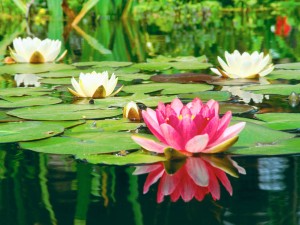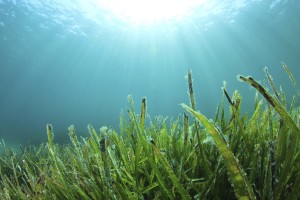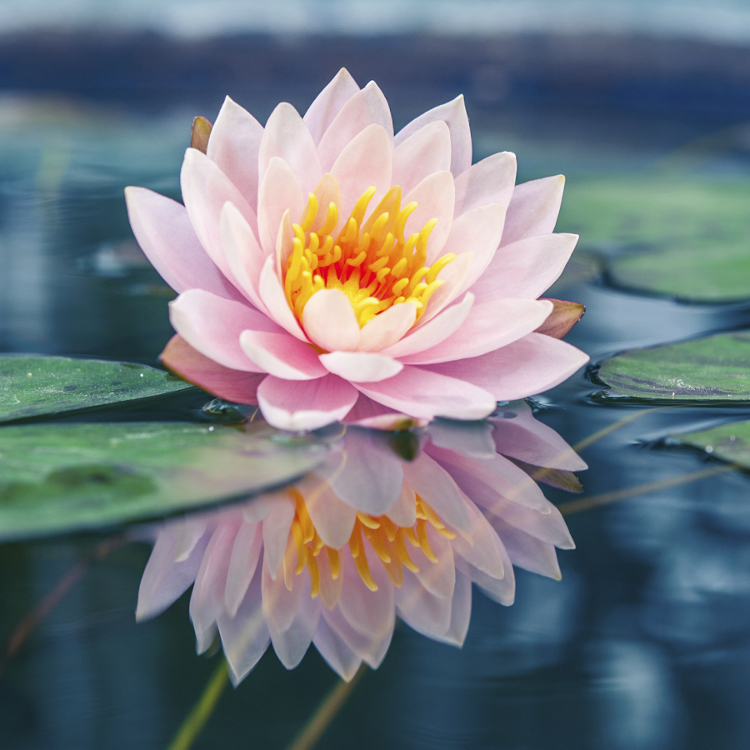All About Aquatic Plants
While you may not be all that familiar with them, you’ve probably come into contact with an aquatic plant or two before.
Nov 05, 2019
If asked, we bet you could list at least five different types of plants and flowers that can be found in your garden or in a beautiful bouquet, but could you name five plants that thrive in the water? While you may not be all that familiar with them, you’ve probably come into contact with an aquatic plant or two before (if you have a fish tank at home or prefer to spend your time being one with nature, we’re looking at you). But since just seeing them isn’t enough, we’re breaking things down to increase your awareness about plant life in the water.

What are aquatic plants?
Aquatic plants are those that can be found in any salt or freshwater environment — a small fish tank, home aquarium, lake, pond, ocean, you get the idea. Whether they live above water, are fully submerged in water or somewhere in between doesn’t make too much of a difference; the main concept to know is that aquatic plants are any species that naturally prosper in a wet environment.
Characteristics of aquatic plants
The characteristics of aquatic plants can vary depending on the type, but there are a few that remain the same. For example, aquatic plants can utilize less of their resources for the purpose of support tissues as they are naturally able to stay afloat. Furthermore, water loss doesn’t have to be a concern because these plants are constantly surrounded by it. But aside from those characteristics that are consistent, here are some that vary based on classification.
- Submerged plants are usually without a cuticle layer in order to avoid excessive dryness.
- Submerged plants lack xylem since their leaves can do all of the work.
- The leaves of submerged plants rarely have stomata.
- Immersed plants have leaves that stick out of the water with access to the air and sun, though their roots are always located at the bottom of a body of water.
- Free-floating plants have leaves that float on the surface of the water as opposed to sticking out of it.
Benefits of aquatic plants
Aquatic plants aren’t just used to give a fish tank some character or to serve as a resting place for frogs (though their ability to add to the aesthetics of bodies of water is certainly something worth mentioning). Rather, they are an extremely important part of aquatic environments as they can:
- Provide protection to fish
- Increase oxygen levels in water
- Filter water
- Prevent undesirable plants from growing
- Act as food
Additionally, in larger bodies of water specifically, they can also help our shores fight against aggressive currents and erosion.
Types of aquatic plants
Now that you know more about what aquatic plants are, their characteristics and their benefits, it’s time to get into the different types that can be found. Below, we’ve put together a list of aquatic plants that can be found in fish tanks/aquariums, the ocean and ponds.

Aquatic plants for a fish tank/aquarium
Regardless of whether you have a small fish tank at home or support a large aquarium, some popular aquatic plants for your home to consider are water hyacinths, anubias, and java moss.
- Water hyacinths, also known as eichhornia crassipes, are native to South America. A free-floating plant, these are known to be approximately three feet tall at their highest. Water hyacinths are particularly important because they are good aerators for the water and can also absorb harmful waste.
- Anubias plants are a great choice if you’re looking to spice up your fish tank’s personality. Known to originate in Africa, these plants really stand out among other fish tank decor as they are one of the taller aquatic plants.
- Java moss is beneficial for a home fish tank because it can thrive under various conditions and can help maintain the nutrients in water. Additionally, it can grow pretty quickly!
Aquatic plants for the ocean

If you’ve been to the beach, you must be familiar with at least one aquatic plant — seaweed! This type of aquatic plant essentially encompasses several types of marine plants and algae, two being phytoplankton and kelp. Here’s how they differ:
- Phytoplankton, sometimes called microalgae, are one of the smaller types of seaweed. And though this is a plant that thrives in the ocean, it is similar to our terrestrial plants since it does require sunlight in order to survive. You can usually find this type of plant towards the ocean’s surface, and one of its main functions is to provide food for those animals that live in the sea.
- Kelp, on the other hand, is a smaller seaweed that can be found in the ocean. More often than not you’ll find “kelp forests” in shallow ocean waters. These are particularly important to ocean life because it provides food and shelter.
Aquatic plants for a pond
Even if you don’t have a pond in your backyard, it’s still important to be familiar with this last group of aquatic plants. We bet you would definitely recognize the first - the water lily:
- Water lilies, also called nymphaea odorata, are important to our waters because of the way that they provide shade and help keep things clean (and of course, they are a great place for frogs to kick back and relax). Similar to phytoplankton, water lilies are best suited for shallow areas, and they’re also known for the beautiful flower that blooms aside the leaves (just like the lilies you may have in a vase at home).
- Next up, the lotus. This type of aquatic flower is often mistaken for water lilies as they look pretty similar at first glance. Since they do prefer warm weather it can be difficult for this type of plant to thrive in cold temperatures, but when it is blooming it may be one of the most beautiful aquatic plants you see.
- Last but not least, there is also the arrow arum. These plants are known for the food that they provide for ducks, and again, they primarily thrive in shallow waters.

Aquatic plant care
If you are responsible for aquatic plants in any way, shape, or form, be it for your home aquarium, outdoor pond, maybe even a garden with aquatic features, it’s important to know that caring for this type of plant life may differ from your usual routines. First things first, make sure that you do your research about which plants can survive in the environment you want to put them in — depending on temperatures and lighting, the right plant for you may not be the same as your neighbor’s.
Once you’ve determined which type of aquatic plant or flower you want to use, make sure to check in on them regularly to ensure that everything is going smoothly. For example, you should prune your plants when needed to ensure that your pond or aquarium is nicely manicured, and you must also check the water to make sure it hasn’t been overtaken by any gases that can harm your plants. Finally, if your aquatic plants are living outdoors, make the necessary adjustments to bring them indoors when winter arrives, or rearrange their placement in your pond to ensure that winter weather doesn’t disrupt them!







